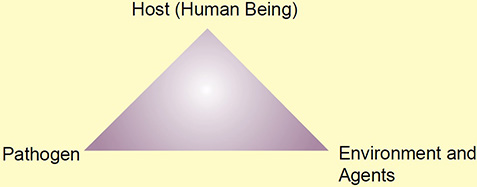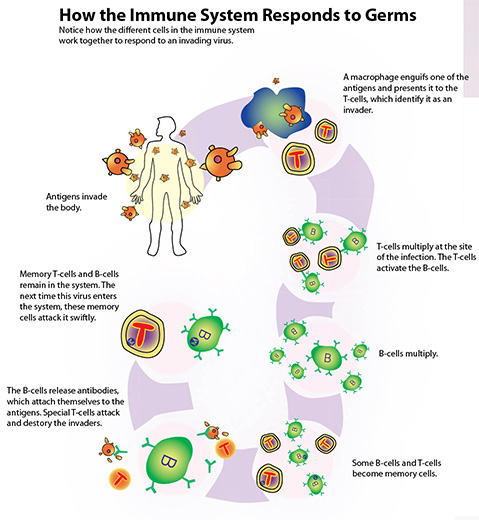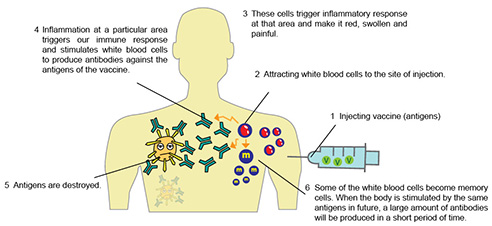Communicable Diseases
| Pathogen |
- Bacteria, Virus, Parasites, Fungi
- Transmissibility, Pathogenicity, Virulence
|
| Transmission |
- Direct vs indirect contacts
- Through: droplets, inhalation, ingestion, blood / body fluid
|
| Lifestyle changes |
- Increased international trades and travel due to globalization
|
Immune System
Non-Specific defence
-

First line – physical barriers such as intact skin and hair in nasal passage; chemical barriers such as tears and saliva
-

Second line - inflammatory response (affected area red, swollen, and warm)
Specific defence
Vaccination
Non- Communicable Diseases
| Examples |
- Diseases - Cancer, cardio-vascular diseases, heart diseases, diabetes mellitus
- Related health problems - strokes, obesity and hypertension
|
| Lifestyle |
- Sedentary lifestyles, unhealthy dietary practice, smoking, alcohol consumption
|
Disease Prevention
| Levels |
Primary |
- Aim:avoiding the development of a disease or injury
- Examples:health education and vaccinations
|
| Secondary |
- Aim:early detection of diseases, thereby increasing opportunities for intervention to prevent the progression of the disease
- Examples:health check-ups (such as pre-marital check-up, antenatal check-up)and disease screening (such as colorectal cancer screening)
|
| Tertiary |
- Aim:proper rehabilitation of patients with an established disease to minimize residual disabilities and complications
- Examples:rehabilitation service
|
| Government strategies |
Policy making |
- Example: tobacco control policy, food labelling and safety
|
| Diseases prevention and surveillance |
- Centre for Health Protection - keeps the community abreast of health risks through the issue of alerts and tracks changes in the risk profile and health determinants of the population
|
| Control of the disease spreading |
- Real time surveillance
- Rapid intervention
- Responsive risk communication
|
| Public health promotion |
- Territory-wide health promotion programmes such as "healthy eating", "active living"
|
| Resources management |
- Mobilising resources and providing support for non-governmental organisations in health promotion and disease prevention
|
Latest Update: October 2019
Power-point
Details See all e-Learning resources
See all e-Learning resources
Booklet
Details
Centre for Health Protection
Details
World Health Organization
Details
Government’s Preparedness and Response Plan for Novel Infectious Disease of Public Health
Details
COVID-19 Thematic Website
Details
Tasks & Worksheets (Coming Soon)
Details
| What are the relationships between lifesyles and communicable and non-communicable diseases? |
| What is disease prevention? |
| How could disasese prevention be implemented at individual, society and global levels? |
| One Note |  |
|
| Docs |  |
|
| One Drive |  |
|
| Google Drive |  |
|
| Google Sites |  |
|
| schoology |  |
|
| Google Slides |  |
|
| Sway |  |
|

















